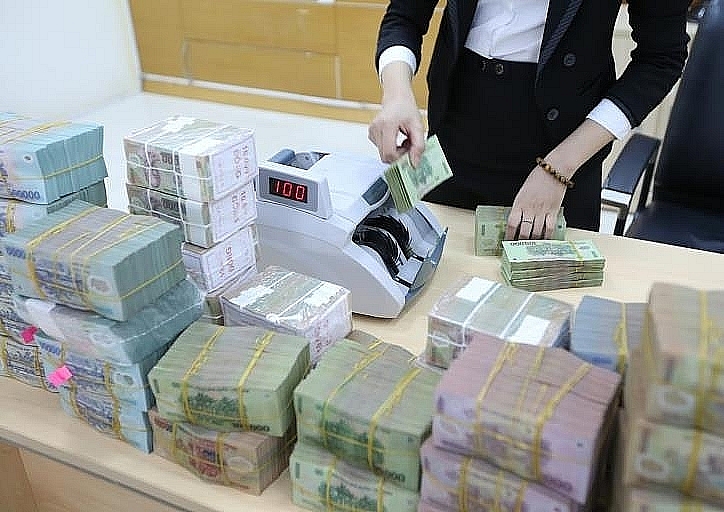Supporting to improve the liquidity of bank sector
Since the end of 2022, the State Bank of Vietnam (SBV) has made many policy changes to supplement money into the economy, helping ease liquidity stress.
 |
|
According to the results of the survey on business trends in the first quarter of 2023 conducted by the State Bank of Vietnam, credit institutions expect that liquidity would improve by more than 2022. Photo: Internet |
The SBV issued Circular 26/2022/TT-NHNN (Circular 26) amending and supplementing several articles of Circular No. 22/2019/TT-NHNN dated November 15, 2019, regulating the term, safety ratio in operations of banks and foreign bank branches. The Circular is valid until the end of 2023.
The ratio of outstanding loans to total deposits (LDR) is still calculated according to current regulations in Circular 22/2019/TT-NHNN at 85%. However, the Circular allows banks to include a part of time deposits of the State Treasury in the deposit component.
This rate is deducted according to the gradually decreasing schedule, from the effective date of the Circular until the end of this year, deducting 50% of the balance of deposits with the State Treasury. From January 1, 2024, to December 31, 2024, deducted 60% of the deposit balance of the State Treasury. From January 1, 2025, to December 31, 2025, remove 80% of the deposit balance of the State Treasury. From January 1, 2026, 100% of the State Treasury's deposit balance will be deducted.
According to experts of VNDirect Securities Company, this regulation will positively impact the system's liquidity when there are about 50% of time deposits of the State Treasury at commercial banks estimated at more than VND 150,000 billion, according to the financial report data of the fourth quarter of 2022, will likely be included in the lending room of the system. Accordingly, it will partly reduce pressure on lending interest rates.
Therefore, the provisions of Circular 26 will bring advantages to banks with abundant deposits from the State Treasury and commercial banks with the state capital, such as Vietcombank, VietinBank, BIDV, and Agribank.
According to experts from SSI Securities Company, Circular 26 can be seen as a way to support market liquidity in the medium and long term without removing the number of deposits on the interbank market from the formula.
Talking to the press at the end of 2022, Mr. Luu Hoang, Director of the Bureau of Treasury Management, State Treasury, said that the current fund balance of the central and local budgets was over VND 900,000 billion. Nearly VND 700,000 billion was demand deposits at the State Bank according to regulations; The nearly remaining VND 270,000 billion was deposited at 4 commercial banks controlled by the State, namely VietinBank, Vietcombank, Agribank and BIDV with a term of 1-3 months, with an average interest rate of 6% per year.
Previously, the general comment on the liquidity situation, according to SSI's assessment, market liquidity was relatively stable, although sometimes, the SBV had to provide temporary liquidity through open market operations.
The SBV's transaction data on the open market showed that the agency had continuously pumped liquidity into the banking system in 3 trading sessions after the 2023 Lunar New Year, with a total value of more than VND 31,700 billion. Previously, the SBV was also continuously pumping money in the week before the Tet holiday, with the accumulated volume reaching nearly VND 78,000 billion to meet the peak payment period at the end of the year. Thus, this move reversed the trend of net injection of nearly VND 72,000 billion in October and November 2022.
Moreover, the State Bank has also started to buy US dollars to replenish foreign exchange reserves, and this is also a channel to provide liquidity in VN dong to the market. As a result, the domestic exchange rate fluctuations are quite stable thanks to the weakening trend of the US dollar.
However, experts said that money-pumping activities must also be cautious when inflation and exchange rate are still potentially risky. In addition, the ability to absorb enterprises' money was also not great when interest rates had remained high in recent months. The deposit interest rate was 8% to 9.5 %/year for ordinary deposits, but the lending interest rate had not changed much - still at an average of about 12-16 %/year.
In many exchanges, leaders of the State Bank said that the SBV would focus on solutions, giving the highest priority to ensuring liquidity, maintaining stability and safety of the banking system, continuing to operate flexibly and synchronously with monetary policy tools, closely coordinate with fiscal policy and other macroeconomic policies to contribute to controlling inflation, stabilizing the macro-economy, ensuring the great balance of the economy; stabilize the currency and foreign exchange markets; direct credit capital flows to focus mainly on production and business fields, priority areas.
Experts said that abundant liquidity would continue to be maintained into 2023 thanks to easing exchange rate pressure, slower credit growth, and more active capital mobilization. At the same time, money supply growth would recover thanks to improved public investment and the direction of continued liquidity support from the operator.










